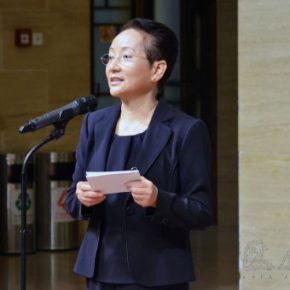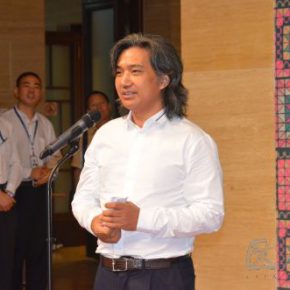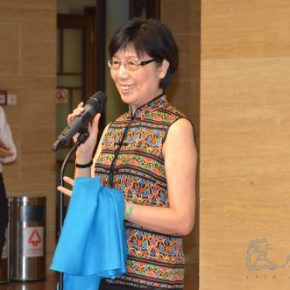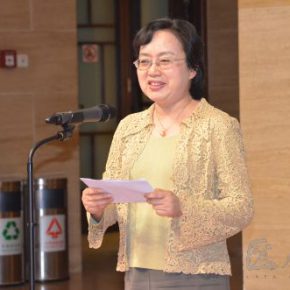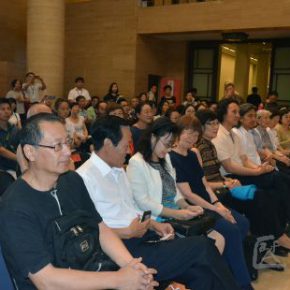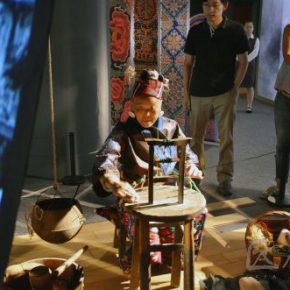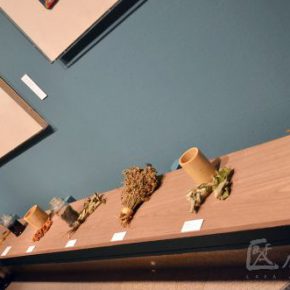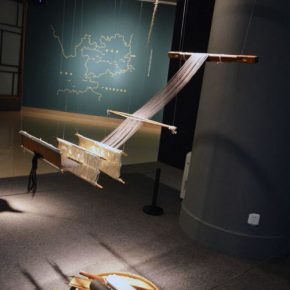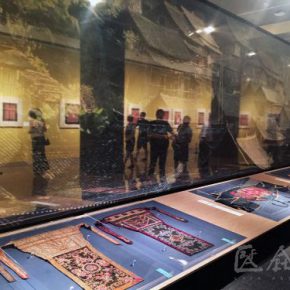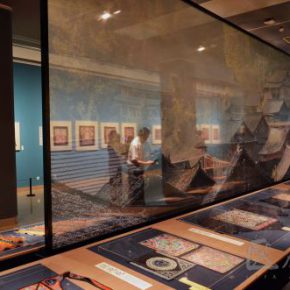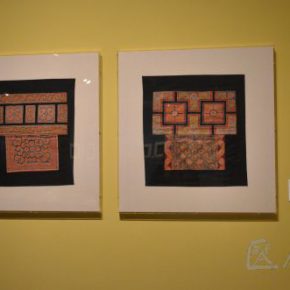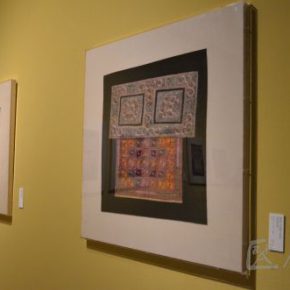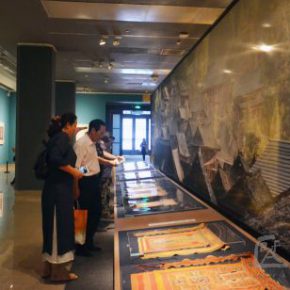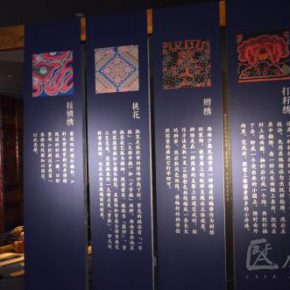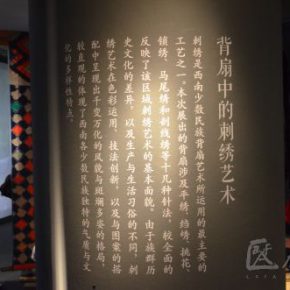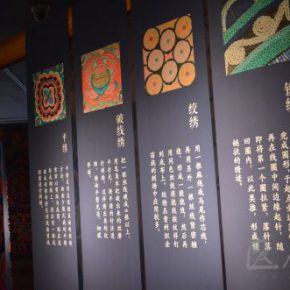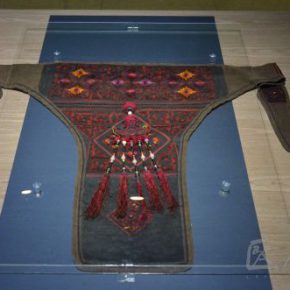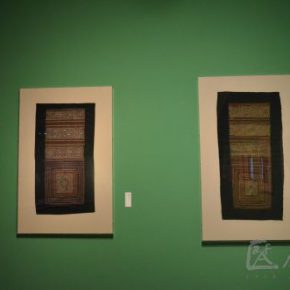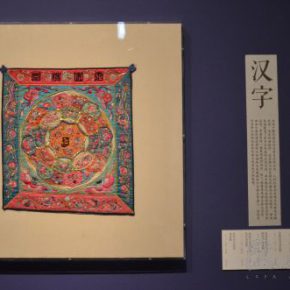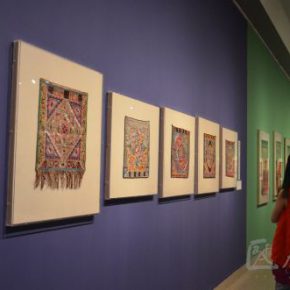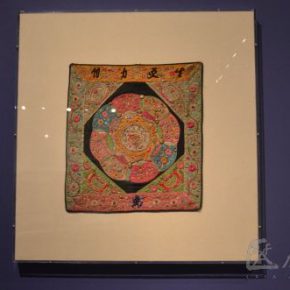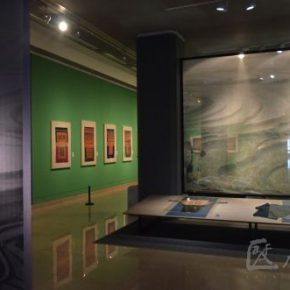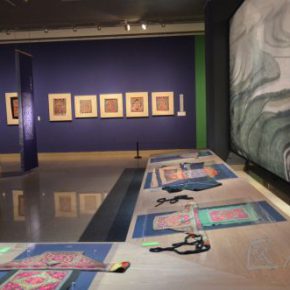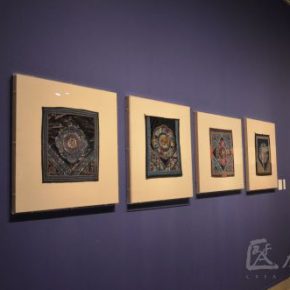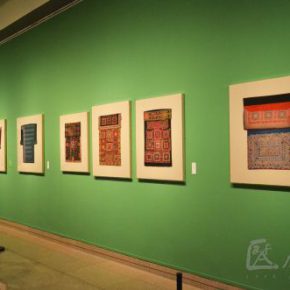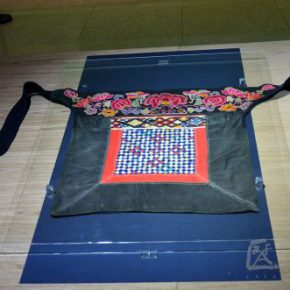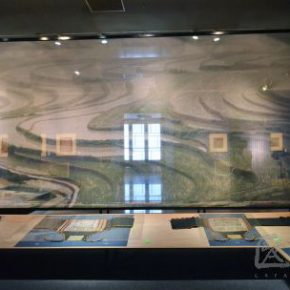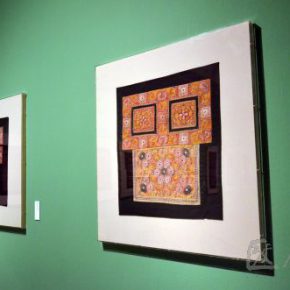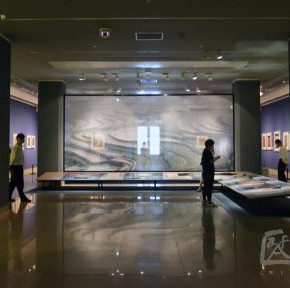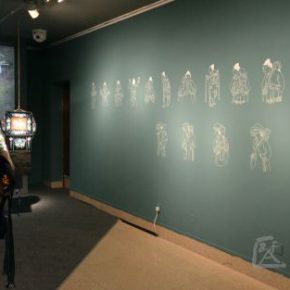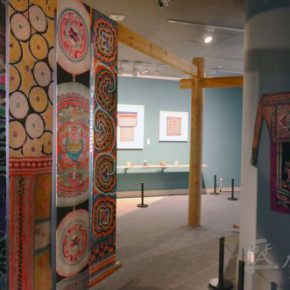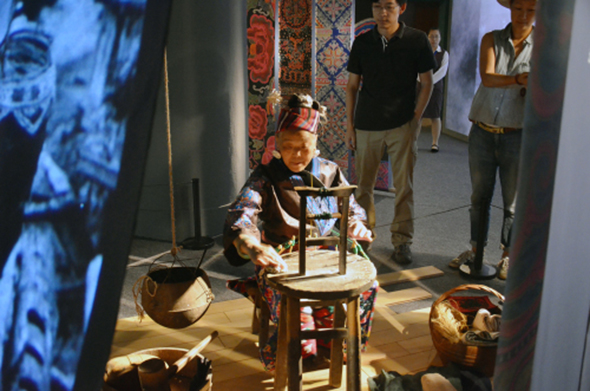
Baby back fans, also known as baby back straps, are straps that minority women used to carry their babies on the back when going to the market or working in the fields. Baby back fan is not only an article of utility, a shield to protect a young baby, but also a close ink between mothers and their children.
Poured in thick motherly love, Baby back fans are delicately and beautifully ornamented. From the color matching to the plastic arts, these fans are made with the skills of weaving, embroidery, dyeing, insertion and taping, they become beautiful pictures, which do not only demonstrate the glory of maternal love and women’s superb skills, but also the most collective display of the culture and art of the Southwest Minority. On the morning of August 19, 2016, “Attachment to the Hometown–Exhibition of Selected Baby Back Fans from Ethnic Groups in Southwest China Donated by Li Huizhen”, hosted by the National Art Museum of China, opened in the square hall on the ground floor. The donation program is a part of the “National Arts Collection and Donation Reward Program” jointly established by the Ministry of Culture and Ministry of Finance, which is the country’s recognition and praise of the selfless dedication of Li Huizhen.
Baby Back Fans: Blended in the Maternal Love and Virtuosity“Baby back fan”, namely the tapes to bear infants, is the cradle and swaddling clothes on the back of the mother. With the wisdom and skills, women blend the care of life, the memories of ancestors and the love to the natural world in a smallbaby back fan. Understanding them, we can understand the spirit, history, culture and emotional content of an ethnic group.
The majority of Southwest Minorities generally do not have their own writing, and they generally dictate stories, legends, and poetry to remember the historical memories of the ethnic groups, as well as pictographic patterns represented by clothing patterns, which is called the “History Books Dressed by People”. In the baby back straps, the abstract ornamentations which are called “Mi Mai (namely a horse)” and “Lang Wu (river waves)” depict the history of the Miao people who stepped over the mountains and rivers, to migrate southwards. The abstractions of these heavy memories were fixed in the baby back fans, through which they could edify the younger generation, to inherit the culture and history of the ethnic group.
At the central hall on the 5th floor, the elegant indigo background, the huge pictures of a Miao village in Guizhou, the display area built by wooden structures to mimic Dong people’s houses, as well as the beautiful baby back fans hung on bamboo sticks, give the audience a sense of being in the Southwest Minority houses, once they entered the exhibition hall. The ancient Miao people’s sewing machine, taping machine, various vegetable dyes, and embroidery tools are on display in the room, so that the viewer can have an intuitive and comprehensive understanding of the fans that fused the great maternal love and virtuosity. In addition, the exhibition also sets a model for baby back fans, so that the viewer can personally operate and tie it.
The Ethnic Embroidery Art Returned to the Motherland from AbroadContacted by Prof. Li Meixian from The University of Hong Kong, Li Huizhen, Vice Chairperson of Hong Kong Fuhui Education Foundation collected a number of Southwest Minorities’ baby back fans from an American collector. This includes about 1770 pieces which is the biggest batch and is donated tothe National Art Museum of China for their permanent collection. The exhibition features the selected 150 pieces to satisfy the audience.
At the opening ceremony, Li Huizhen said that, on the one hand, she hoped through this exhibition and related public education activities such as seminars,to help the public have a more profound understanding of the culture of Southwest Minorities, on the other hand she also hoped that the donated baby back fans can be handed down for posterity. These works come from 8 minorities of Guizhou, Hunan, Guangxi and Yunnan, and Miao people’s fans from Zhijin, Nayong in Guizhou, and Western Guizhou, are the most abundant, the production time spanned the late Qing Dynasty to the 1980s, while a lot of valuable embroidery treasures are non-renewable.
The donation exhibition is entitled “Attachment to the Hometown”, on the one hand, it is intended to recognise the skill, exquisitely ornamented baby back fans to make people feel the colorful ethnic art which was woven and embroidered by the Southwest Minority Women. On the other hand, “Attachment to the Hometown” also shows the human feelings and sincere patriotism of Li Huizhen who generously collected the works and selflessly donates them to the country,“She is like a colorful ribbon, linking Southwest Minorities and China”.
The exhibition continues to September 18, 2016.
Photo and text by Lin Jiabin/CAFA ART INFO
Translated by Chen Peihua and edited by Sue/CAFA ART INFO


